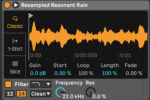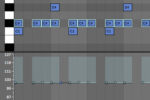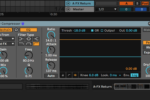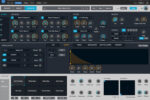The Camelot Wheel Explained
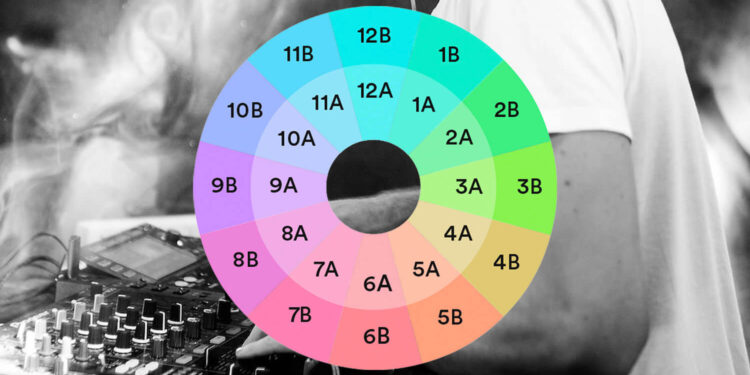
The Camelot Wheel is your key to demystifying seamless DJ transitions – we explain why
Ever pondered how top DJs effortlessly weave tracks together in an unbroken, all-night-long set? The answer lies in mastering harmonic mixing – understanding how songs connect with one another based on which key each is in. When blending one track into the next, decisions should be guided by the melodic and chordal elements present in the song that’s playing and the incoming track.
Enter the Camelot Wheel, a system popularized by Mixed In Key, which is designed to simplify this process.
What Does It Mean for a DJ to “Mix in Key?”
Mixing in key is an essential technique that DJs use to ensure a smooth and seamless transition between songs during a set. By selecting tracks that are in the same or compatible musical keys, DJs can create a more cohesive and enjoyable listening experience for their audience.
If this sounds a bit daunting, the Camelot Wheel comes to the rescue! It serves as a user-friendly guide, offering a visual diagram and number-to-key labeling to easily see how compatible two tracks’ tonal centers are. No need to analyze the music theory behind your set; the Camelot Wheel acts as a trusty companion for achieving seamless transitions and effortlessly mixing songs.

For those intrigued by music theory, exploring the circle of fifths provides further insights into the Camelot Wheel.
Going in blind… well, deaf
By using our knowledge of tempo and a key center selection, we can accurately anticipate the compatibility between songs. Harmonic mixing comes into play, allowing us to assess whether two nicely balanced tracks will seamlessly blend when mixed together.
While it’s not mandatory for a DJ to strictly adhere to harmonic mixing – creative transitions are certainly possible without it – keeping key centers in the back of your mind can enhance your ability to endlessly navigate between tracks and gradually shift into new tonal centers as your set progresses.
The Camelot Wheel is a tool that aids in selecting the perfect next track, preventing clashes, and acting as a safeguard against jarring mixes that are apparent to rapt audience members. Embracing the Camelot Wheel can turn your overwhelming song pool into a night of effortless blends.
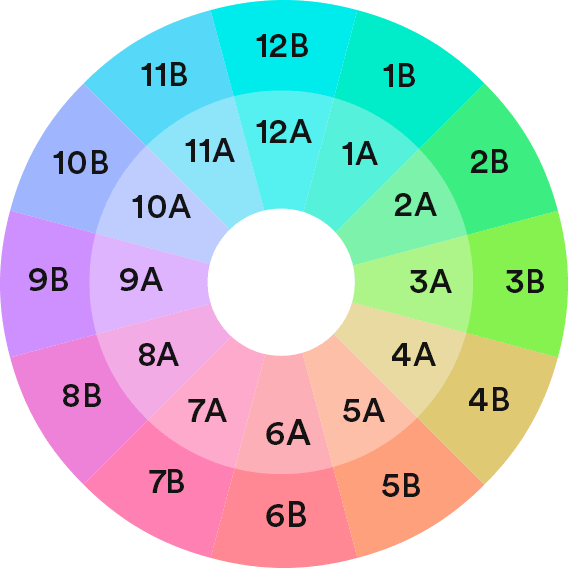
How does the Camelot Wheel work?
The Camelot Wheel serves as a valuable visual aid for DJs, providing a clear representation of the nearest key centers for any specific song. This tool streamlines the analysis of tonal centers, enabling DJs to no longer fear the need for extensive knowledge of specific scales or key signature symbols.
Instead, the Camelot Wheel organizes these elements into a numbered system ranging from one to twelve. Along the outer ring of the circle all key centers are major, signified by the letter A.
The Camelot Wheel displays harmonically matching minor tonalities, marked with the same number but followed by a B, and situated on the inner part of the circle. The distinctions between A and B signify major and relative minor keys respectively, sharing identical notes but originating from different root notes. This relationship means that a song labeled as 8B uses precisely the same notes as 8A, allowing for a seamless blend of these two songs without encountering any dissonant clashes.
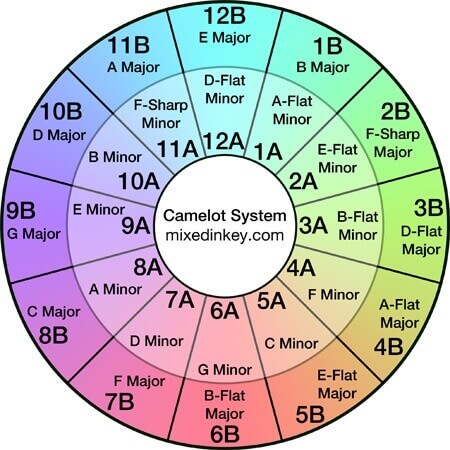
As Camelot numbers move around the circle, each numerical increase or decrease signifies a shift in the note-makeup of the new key. The Camelot Wheel rules ensure that going up or down a number results in the alteration of just one out of the seven notes in the current key.
This indicates that moving to close Camelot values will make for subtle transitions that are audibly unnoticeable to the ear. In practical terms, that means it’s safe to blend a track labeled 8A into tracks labeled both 7A and 9A.
Give it a spin
DJ software like Serato, Rekordbox, and Traktor incorporate the Camelot Wheel by assigning numerical labels to each track. This feature proves invaluable when transforming a playlist into a setlist that will seamlessly progress from one song to the next. It aids the process of identifying tracks that complement each other, narrowing down the song pool and facilitating quick decision-making.
While the Camelot Wheel shows the larger tonal leaps that are within reach around the circle, it’s crucial to pay attention to the harmonic density of your tracks. Tracks with a simple, static bassline and minimal harmonic complexity may permit more significant tonal shifts compared to blending two harmonically dense tracks.
In instances where a track features minimal harmonic information, such as a drum loop or a percussive intro without vocals, chords, or bass, you have the freedom to transition to any key of your choosing. These elements serve as excellent pivot points in a set, enabling you to introduce completely new and distinct tonal centers to the set.

To refresh the Camelot Wheel rules, when shifting to a new key center, move either clockwise or anticlockwise around the circle, adjusting the number up or down for the smoothest transitions. Keep in mind that the further you move from the current song’s Camelot number, the more variations in notes will occur between the two tracks.
What Is the Difference Between the Camelot Wheel and the Circle of Fifths?
While they may seem similar at first glance, there are key differences between the Camelot Wheel and the Circle of Fifths that are important to understand.
As explained above, the Camelot Wheel is a color-coded system that assigns a unique code to each musical key with a number from 1 to 12 representing the musical pitch class and a letter (A, B, C, or D) indicating the mode (major or minor).
On the other hand, the Circle of Fifths is a visual representation of the relationship between musical keys based on the circle’s layout of perfect fifths. It shows how each key is related to its adjacent keys by a fifth interval, helping musicians understand the harmonic progression and modulation possibilities when composing or arranging music.
One significant difference between the two is their intended use. The Camelot Wheel is specifically designed for DJs and producers to quickly mix songs in harmonic key combinations during live performances or studio sessions. In contrast, the Circle of Fifths is more commonly used by composers and music theorists to analyze chord progressions, key changes, and tonal relationships within a piece of music.
Overall, both tools serve as valuable resources for musicians and DJs looking to enhance their understanding of music theory and create seamless transitions between songs. By familiarizing yourself with both the Camelot Wheel and the Circle of Fifths, you can elevate your music mixing skills and create more engaging and harmonically pleasing sets.?
Too much of a good thing
While it’s crucial to consider mixing in key, don’t let it become a barrier to playing a track that you sense the crowd is eager for. To avoid a clashy blend, there are various inventive ways to transition, like echoing out a track and introducing a new one that may not be harmonically related.
However, even when working with Camelot numbers that seem distant and unrelated, you might stumble upon happy accidents and create intriguing musical blends. It’s reminiscent of the classic jazz idiom: “There are no wrong notes”. Harmony is just one facet of a track’s context; factors such as tempo, feel, and instrumentation also contribute to a successful transition. For example, rhythmic elements might clash when blending a straight beat into a swinging groove.
While sustaining a harmonious flow between tracks is essential for a coherent set, embracing the dissonance from clashing harmonic centers can be used strategically to build tension in a set. Dissonant tension is a whole exploration in itself and can be a powerful tool in injecting further interest into a DJ set.
What’s next?
If you’re looking to up your DJ game, you should check out R3WIRE’s super-popular course The Complete Guide to Modern DJing.
From intimate venues and festival stages to some of the world’s best known super-clubs, R3WIRE does it all. His career evolution is inspiring to witness. From starting off mixing on vinyl, to reinventing himself over COVID, to the world-touring DJ and producer you see today.
With over four hours of content to work through, there is a huge amount to be learnt from his in-depth course. You’ll learn how to navigate your way around Rekordbox including its deeper settings and CDJ configuration pages, how to develop your own social media strategy and publish your first posts, how to plan and structure a set, and how to make the most of the technical features of your hardware. So, take your DJ set to the next level, courtesy of R3WIRE!




